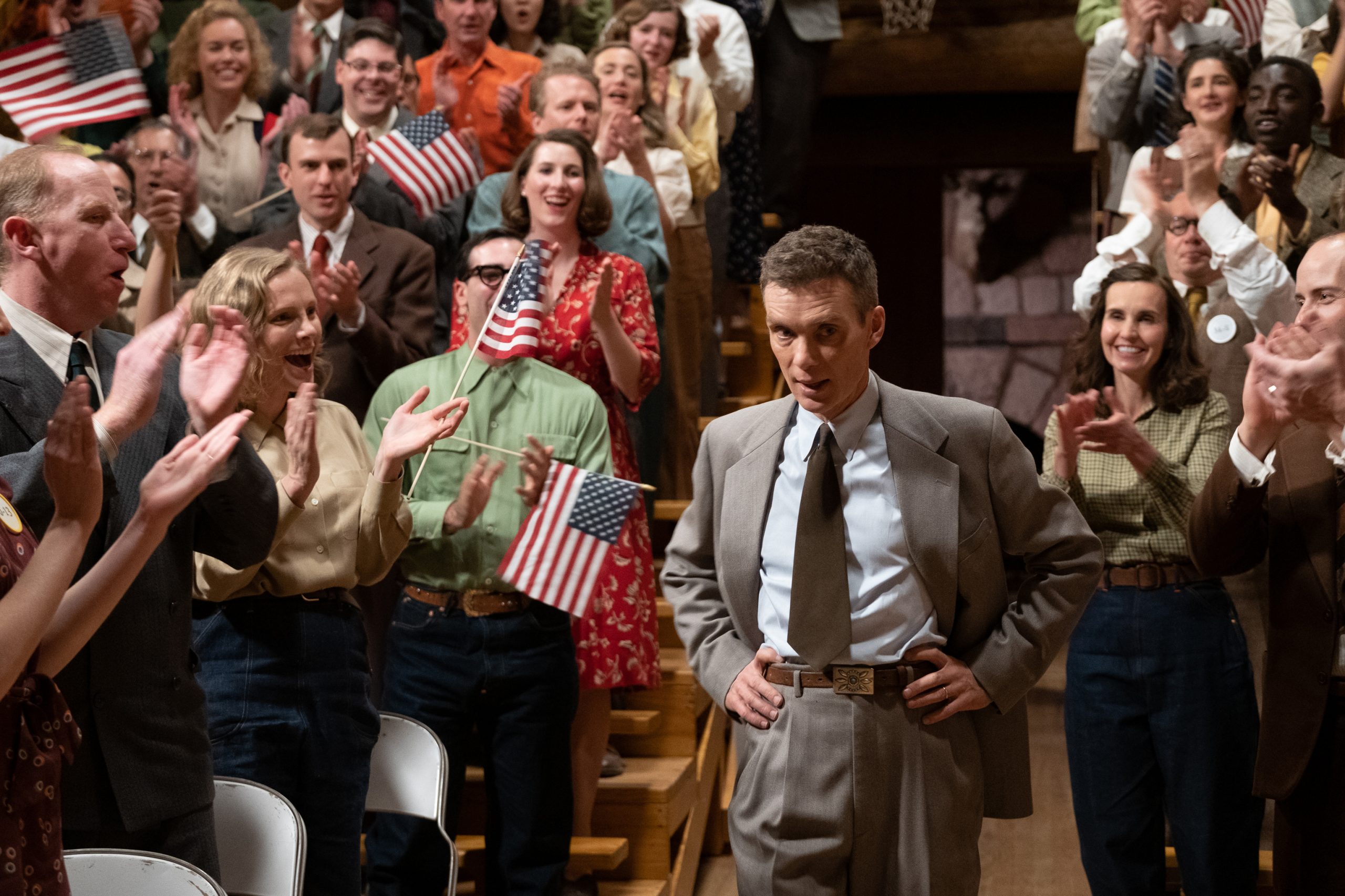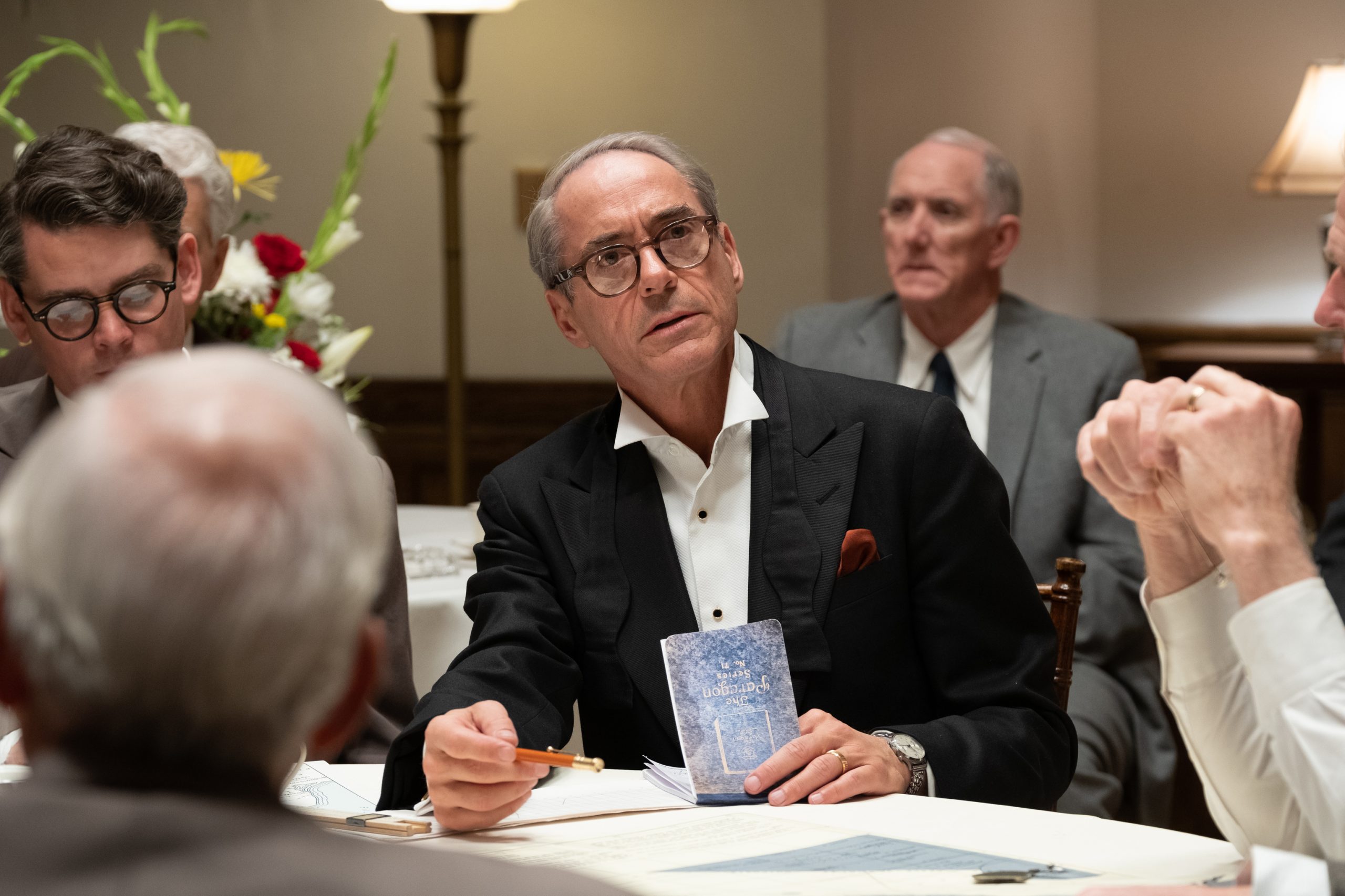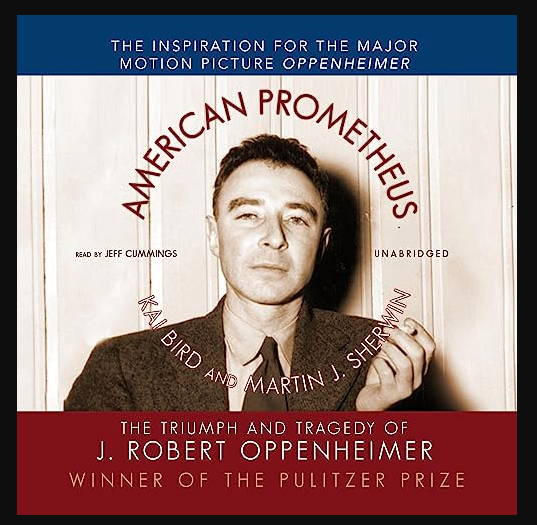
Oppenheimer: The Costumes
I bring you award winning, erstwhile fashionista Ellen Mirojnick, costume designer for Oppenheimer. She began in fashion/couture but segued to costume design and has brought us such Zeitgeist-defining characters/looks as Gordon Gekko in Wall Street, Liberace in Behind the Candelabra, the steampunk/Dior inspired master of ceremonies in The Greatest Showman and pretty much everyone in Bridgerton.
Her wardrobes are bespoke, in the traditional sense of the word, which, IMO, has become watered down. Building a bench from scratch is not the same as crafting a wardrobe from the hems up to define a character and tell a story.
Her work springs from her prodigious brain, all her research and knowledge, her conversations with the director and the actor, as well as the DP and production and costume designers and then it goes straight to the pattern cutters and tailors!

Bespoke
The actual meaning of bespoke reflects her work and history –
In a made-to-measure setting, a sales representative with a basic tailoring understanding takes the measurements and refers these to a tailor subsequently. In a bespoke setting, a tailor interacts directly with the client and takes measurements. This is due to the need for detailed and precise measurements.

Nolan’s Vision
In the case of Oppenheimer, she had many many main characters to garb, based on historical research and director Christopher Nolan’s vision. In particular, of course, was the famous scientist himself.
His well-known silhouette – the baggy suit, the idiosyncratic hat, the pipe – is an actual character moment in the film – he eschews his Army dress uniform for his signature garments and in so doing, really owns the mantle of and becomes The Father of the Atomic Bomb. The hat required the persistent inquisitiveness of a detective!

Q. How many costumes/looks in total were created for the film? From that number how many were made/hand-crafted by the team in house?
EM: (Ellen Mirojnick): All principal costumes were designed and built by outside tailors and cutters . Our in-house team was small . costume supervisor, costume key, costumers for shopping, costume pulling and fitting, two assistants , one research production assistant
Well over 1000 costumes were produced for the film. We built ten different suits for Oppie not including doubles for the entire movie. Cillian/Oppie had two hats (three of the Los Alamos hat in case it blew away), about a dozen shirts (doubled), three pairs of shoes, a dozen ties, three coats, and a bespoke leather belt with turquoise and sterling silver buckle made based on historical research.
Oppie had three pairs of cufflinks that followed him through the movie, a black pearl stud, an enamel stallion, and for Los Alamos a motif in sterling with an opal stone that aired between a sheriff’s badge and an atomic star.

L to R: Cillian Murphy is J. Robert Oppenheimer and Robert Downey Jr is Lewis Strauss in OPPENHEIMER, written, produced, and directed by Christopher Nolan.
The doubles
For Oppie, we only doubled his Trinity and Los Alamos suits because of the frequency of wear and the needs of the script. While we had a double ready for trinity, it was Cillian himself who actually climbed the tower! We also produced doubles for Jean’s drowning scene for resets and actor comfort.
While Robert Downey, Jr/Lewis Strauss was in a smaller timeline of the film he had about the same number of suits and shirts produced. All of Strauss’ shirts and linen handkerchiefs were custom embroidered with his monogram LLS.
We tailor-made a butter yellow tie with embroidery to match one from research Strauss wore during the actual senate hearings. Strauss’ cufflinks were also all personalised with his initials hand engraved. Strauss’s white silk opera scarf was specially flown in from London.

Cillian Murphy is J. Robert Oppenheimer in OPPENHEIMER, written, produced, and directed by Christopher Nolan.
How many?
Approximately 100 suits, 300 shirts, and 100 ties were custom made in addition to the vintage and sourced pieces for principal cast. 50 coveralls were made for Trinity scientists as well as 40 period labcoats.
Varsnick our dressmaker in LA made the silk velvet dress when we first meet Jean Tatlock. Finding the particular colour velvet we were looking for we searched the globe sourcing samples from Los Angeles, New York, London, Germany and Korea.

Q. Please explain the bespoke process – once you have an idea of what the costume(s) will be then what? In the case of Oppenheimer, discuss your tailors and fabric people, anything about how your team creates the wardrobe and how many people, how many doubles, did you make different versions for black and white and colour or did they have to work for both?
EM: Bespoke tailoring is particular because it includes not just the size of a person in a current style but also considers more precise detailed measurements, posture and fit, and the lines of a particular period or persona to accomplish the look necessary for a film. It’s where a suit becomes more than clothing and is arguably a work of art on its own.
We worked with master tailors from Los Angeles, New York, Ireland, and Budapest, as well as two department tailors in New Mexico. We also collaborated with LA dressmakers for Emily and Florence, hat makers in LA, NY and Italy for Oppie, shirtmakers, tiecrafters and jewellery artists in NY and LA, a knitter and denim maker in NY, shoemakers in Canada and LA, and a factory in Boston (for labcoats and coveralls).

Jason Clarke is Roger Robb in OPPENHEIMER, written, produced, and directed by Christopher Nolan.
Q. Because the IMAX is so powerful, how did that impact or change your approach?
I loved the approach for the IMAX in this film. The intimacy allowed for immediate details to be seen without extra layering. It didn’t change my approach, it allowed me to focus on the beauty of the fabric the texture becomes a landscape for the jacket, the texture of the tie, the quality of the colour that framed the face and anything framed the character
I think the beauty of the IMAX allowed me to make sure you would be able to feel the reality of what we were creating.

L to R: Cillian Murphy (as J. Robert Oppenheimer) and writer, director, and producer Christopher Nolan on the set of OPPENHEIMER.
Q. What fabrics/textures seemed to work the best for black and white?
EM: What you see in colour is the same as was seen in black and white- what would be shot in colour would be shot in black and white right after . For all portions of the movie including the black and white we used fabrics that represented the social and economic class of the characters being represented.
The young scientists were often seen in the worsteds, flannels and gabardines with more texture and colour while politicians particularly in the black and white portion would wear twists, serge and alpaca in plains of muted value and tone.
Oppie wore more durable tweeds, donegals and calvary twills, while Lewis Strauss was seen in a range of finer super 100’s & 120’s wool and even cashmere.The fabrications chosen for black and white were either tested or chosen using the iphone black and white filter.

Rami Malek is David Hill in OPPENHEIMER, written, produced, and directed by Christopher Nolan.
Q. You went from fashion to costume design – what was it about the world building/storytelling aspects of costume design that attracted you and how does this differ from your work in fashion? (Getting at the idea that costume design can be fashion but fashion cannot be costume design.)
I have always had a vivid imagination and an unyielding curiosity.. Storytelling is everything to me . My approach to designing a fashion collection was always creating a story that the collections revolved around. I believe fashion tells a story. You are your own story on a daily basis. I love fashion and how it resonates with culture and how fashion and film or film and fashion influence each other.

Framing the story
I’ve loved film since I was a child. Going to the movies was a weekly pastime. I fell in love with the stories that flickered in the dark. Wanting to become a costume designer seemed a natural progression.
It was clear movies were about storytelling and I felt right at home. I love world building. It is an efficient and creative way to fulfil the director’s vision and house all the key elements of the story, the design, the look, the feel of the big picture.It is important to me that the audience never step out of that world and get distracted by a costume.
The Origin
The costume design originates from that source. Being able to design and create the costume from the bottom up, allows me to bring exacting clarity to each character. You create a design that will give the actor the character’s needs and most importantly become the actor’s second skin. It is the character design for the actor that will weave the story within the world. When the story is framed within the world the characters designed live in a seamless story.
I think that fashion can become costume design, maybe not directly from the runway piece but certainly can be inspiration and from costume design fashion can be born!

Watch Cillian Murphy & Emily Blunt & Ellen Mirojnick discuss the costumes for Oppenheimer on YouTube
Q. You had many mandates – period correct but not lavishly so. A story that takes place in the past but has so many contemporary ramifications, dovetailing with Christopher Nolan’s hope to imbue the movie with contemporary notes. Iconic people whose garb can be found with a click – how did you manage all those seemingly antithetical aspects?
EM: In the above question I would not use the word contemporary at all. My challenge was to create costumes that would be TIMELESS and be accessible to a modern audience. Chris indicated that he would like the costumes to have a reality but not stylised or precious.
Chris also proclaimed Oppenheimer was the only person to wear a hat in the film. However, there is the exception of EINSTEIN.. This note is unusual for a period film but it was Oppenheimer’s hat that was the crowning of what was to become an iconic image.

L to R: Matt Damon is Leslie Groves and Cillian Murphy is J. Robert Oppenheimer in OPPENHEIMER, written, produced, and directed by Christopher Nolan.
The dialogue
First, the challenge was how to tell a story over four decades and make it accessible. It required great study of the decades and dissecting what stood out to make it, for example, a 30 or 40’s trouser or dress?
What the silhouettes were, and how they changed throughout time. After which I would create a “dialogue” between what would work and become the makings of our world. What to eliminate was just as important as to what to keep.
Creating the scientists, allowing them to be rockstars of the time required a naturalness throughout their silhouettes that allowed for ease of storytelling, no matter where Chris would ultimately place the scene.
I wanted to make sure if Chris wanted to rip the story up and reweave it at any point, you wouldn’t be taken out of the story because of the costume.

L to R: Tom Conti is Albert Einstein and Cillian Murphy is J. Robert Oppenheimer in OPPENHEIMER, written, produced, and directed by Christopher Nolan.
Q. Did any of the talent influence or make suggestions about their ‘looks?’
EM: The actors always influence the way I build the character . What they look like, their coloration, the shape of body etc all of the actors came in with a thorough history of the person they were about to play. We had to break the research down and translate it to clothing that was best suited for the actor and the character.
The actors were totally trusting of how we would interpret their character TRUST is the essential ingredient in collaboration. In the fitting room I am always conscious of how the actor responds to each piece of costume because we are creating what’s to become their second skin.
All images approved courtesy of Getty Images.
Recommended reading:
American Prometheus: The Triumph and Tragedy of J. Robert Oppenheimer available on Amazon.







